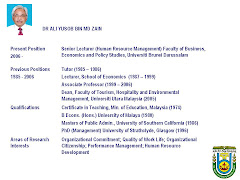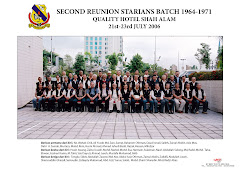Measuring and recognizing accomplishments versus activities and giving feedback to the worker bees often improves the results of the hive. This is the moral to the story below.
The Story
Once upon a time there were two beekeepers who each had a beehive. The beekeepers worked for a company called Bees, Inc. The company's customers loved its honey and demand for the product was increasing. So Bees, Inc. assigned each beekeeper a goal for increased honey production. The beekeepers had different ideas about how to meet their goal and designed different approaches to improve the performance of their hives.
Once upon a time there were two beekeepers who each had a beehive. The beekeepers worked for a company called Bees, Inc. The company's customers loved its honey and demand for the product was increasing. So Bees, Inc. assigned each beekeeper a goal for increased honey production. The beekeepers had different ideas about how to meet their goal and designed different approaches to improve the performance of their hives.
The first beekeeper established a bee performance management approach that measured how many flowers each bee visited. At considerable cost to the beekeeper, an extensive measurement system was created to count the flowers each bee visited. The beekeeper provided feedback to each bee at mid-season on his individual performance. The beekeeper created special awards for the bees who visited the most flowers. However, the bees were never told about the hive's goal to produce more honey so that the company could increase honey sales.
The second beekeeper also established a bee performance management approach but this approach communicated to each bee the goal of the hive for increased honey production. The beekeeper and his bees measured two aspects of their performance: the amount of nectar each bee brought back to the hive and the amount of honey the hive produced. The performance of each bee and the hive's overall performance were charted and posted on the hive's bulletin board for all the bees to see. The beekeeper created a few awards for the bees that gathered the most nectar. But he also established a hive incentive program that rewarded each bee in the hive based on the hive's overall honey production the more honey produced, the more recognition each bee would receive.
At the end of the season, the beekeepers evaluated their approaches. The first beekeeper found that his hive had indeed increased the number of flowers visited, but the amount of honey produced by the hive had dropped. The Queen Bee reported that because the bees were so busy trying to visit as many flowers as possible, they limited the amount of nectar they would carry so they could fly faster. Also, since only the top performers would be recognized, the bees felt they were competing against each other for awards. As a result, they would not share valuable information with each other that could have helped improve the performance of all the bees (like the location of the flower-filled fields they'd spotted on the way back to the hive). As the beekeeper handed out the awards to individual bees, unhappy buzzing was heard in the background. (After all was said and done, one of the high-performing bees told the beekeeper that if he'd known that the real goal was to make more honey, he would have worked completely differently.)
The second beekeeper, however, had very different results. Because each bee in his hive was focused on the hive's goal of producing more honey, the bees had concentrated their efforts on gathering more nectar in order to produce more honey than ever before. The bees worked together to determine the highest nectar yielding flowers and to create quicker processes for depositing the nectar they'd gathered. They also worked together to help increase the amount of nectar gathered by the poorer performers. The Queen Bee of this hive reported that the poor performers either improved their performance or transferred to hive #1. Because the hive had reached its goal, the beekeeper awarded each bee his portion of the hive incentive payment. The beekeeper was also surprised to hear a loud, happy buzz and a jubilant flapping of wings as he rewarded the individual high-performing bees with special recognition.
Accomplishments vs. Activities. Although it somewhat simplifies performance management, the beekeepers' story illustrates the importance of measuring and recognizing accomplishments (honey production) versus activities (visiting flowers).
The type of measurement that should occur at each organizational level and includes measurements used by the beekeepers include:
- Activities are the actions taken to produce results. They are generally described using verbs. Examples of activities include filing documents, writing software programs, and answering customer questions (in the beekeeper fable, the activity was visiting flowers).
- Outputs (or accomplishments) are the products or services (the results) of employee and work unit activities. They are generally described using nouns. Examples of outputs include files that are orderly and complete, a software program that works, and accurate guidance to customers that is accurate and accessible (from the fable, accomplishments included the amount of nectar that was gathered and honey that was produced).
- Outcomes are the final results of all of an agency's products and services (and the effects of other outside factors that may affect performance). Examples of outcomes include reduced highway deaths, a decrease in the rate of teenage alcoholism, and improved air quality (the outcome for Bees, Inc. and its beekeepers and bees was increased honey sales).
Employee accomplishments can be included in employee performance appraisal plans using all three types of performance elements - critical, non-critical, and additional. Many agencies are working hard to develop employee performance plans that support the achievement of organizational outcomes. They would do well to try the second beekeeper's approach of sharing information about organizational goals with the hive, measuring and rewarding accomplishments as well as activities, and providing feedback on performance.






















Sir, this is a very good and interesting example =).
ReplyDeleteThanks
ReplyDelete